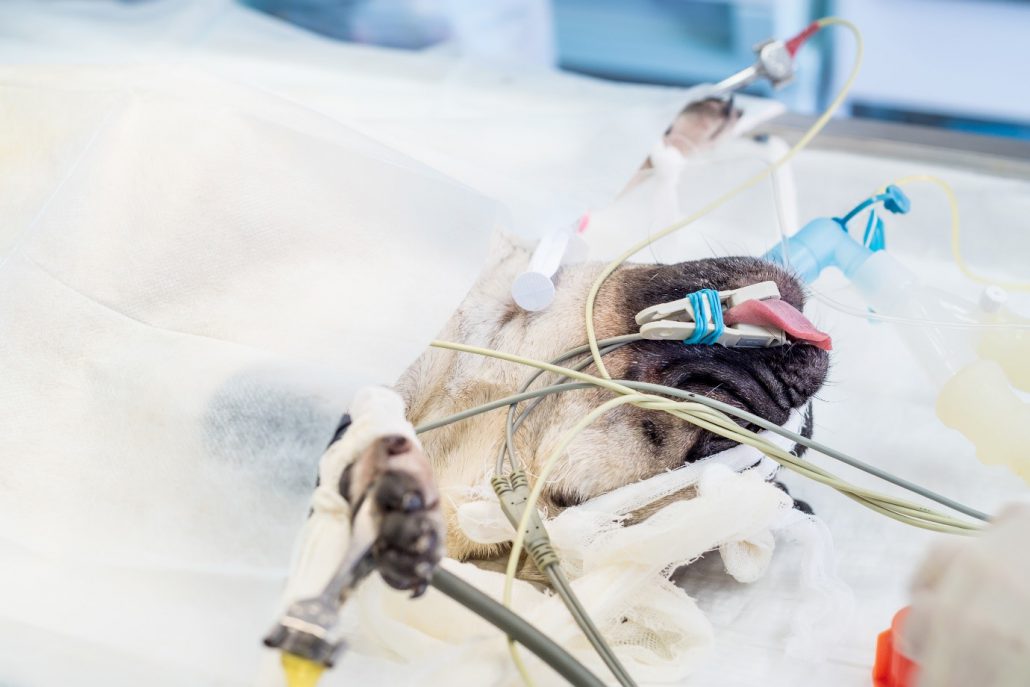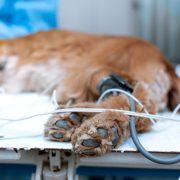Brachycephalic anaesthesia, parts 1, 2 and 3
Brachycephalic anaesthesia

Requires membership/payment
Part 1 can be accessed via RCVS Knowledge Library Membership (click here).
Part 2 can be accessed via RCVS Knowledge Library Membership (click here).
Part 3 can be accessed via RCVS Knowledge Library Membership (click here).
In our edition of: Dec 2019
In our categories of: small animals
our summary:
Scales, C. and Clancy, N.J. (2019) Brachycephalic anaesthesia, part 1: the pre-anaesthetic period. Veterinary Nursing Journal, 34 (6), pp. 146-150
Scales, C. and Clancy, N.J. (2019) Brachycephalic anaesthesia, part 2: the peri-anaesthetic period. Veterinary Nursing Journal, 34 (10), pp. 260-265
Scales, C. and Clancy, N. (2020) Brachycephalic anaesthesia, part 3: the post-anaesthetic period. Veterinary Nursing Journal, 35 (1), pp. 16-18
These review articles discuss Brachycephalic Airway Syndrome (BAS) and the specific considerations for preparation and monitoring of anaesthesia in brachycephalic dogs.
In the first part, covering the pre-anaesthetic period, information is given on the anatomical abnormalities of BAS and their effects on airway resistance and laryngeal collapse known as Brachycephalic Obstructive Airway Syndrome (BOAS). Other brachycephalic-specific anatomical and physiological factors to consider are also discussed, including gastrointestinal complications, e.g. vomiting, regurgitation and gastric inflammation.
The stages of the pre-anaesthetic period are then discussed with reference to specific considerations for brachycephalic breeds. The stages are: obtaining a full patient history as part of the admission process; the pre-anaesthetic physical assessment; evaluation of pre-anaesthetic blood testing; body condition scoring (an example of a body condition score specifically for use in pugs is given); and using the American Society of Anesthesiologists (ASA) physical status scale to assess the risk for each patient undergoing general anaesthesia.
Part two, which covers the peri-anaesthetic period, gives information on the choice of pre-anaesthetic drugs and their administration, induction, intubation and continued monitoring. Patient-specific anaesthetic considerations for brachycephalic breeds are discussed, such as breathing systems, pre-oxygenation, patient positioning and accurate, safe intubation. Possible pre-med combinations are given, as well as tips to improve anaesthetic safety and efficacy.
In part three, the authors highlight the intense nursing required for these patients during the recovery period. Information is given on extubation timing, monitoring patients post-anaesthesia and discharge.
The increased number of brachycephalic dogs seen in practice means that this is a timely set of articles which will raise awareness of specific concerns with regards to anaesthetising these breeds.
The information provided is clearly set out, with reference tables and photographs to demonstrate the procedures being carried out. All members of the veterinary team would benefit from reading these articles, which include coverage of the basics as well as more advanced brachycephalic-specific anaesthetic issues. Practitioners may want to consider using the information given to create specific brachycephalic anaesthetic checklists.
Image copyright attribute: Yakov Oskanov
Join the discussion
We encourage discussion on all material highlighted in each edition of inFOCUS. Use the button below to join the conversation on Twitter and include your comment in the feed for this issue.






Leave a Reply
Want to join the discussion?Feel free to contribute!